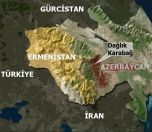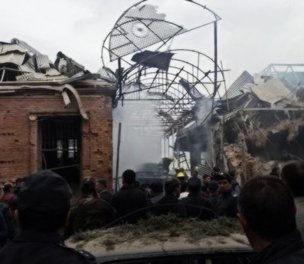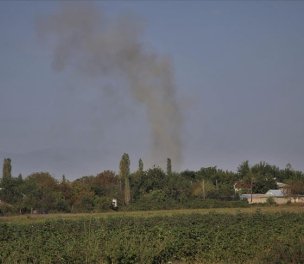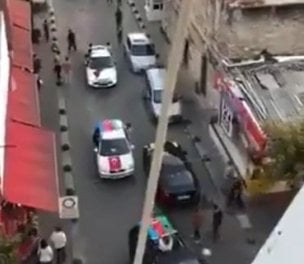* Photo: Hrant Dink Foundation
The Hrant Dink Foundation has made a call for peace amid ongoing conflicts between Azerbaijan and Armenia, two neighboring countries, in the Nagorno-Karabakh region in the South Caucasus.
Publishing a written statement and a video on its website, the Foundation has said, "We are deeply saddened and worried about the recent conflict in the region. We call on the administrators of all related countries to open negotiation channels and to operate diplomatic tools so that the societies of Armenia and Azerbaijan can live together in peace."
The Foundation has also referred to its own efforts to normalize the relations between Turkey and Armenia within this context:
"As the Hrant Dink Foundation, we have been working to contribute to the normalization of the relations between Armenia and Turkey since our establishment in 2007. We attribute special importance to the development of relations between Turkey and Armenia.
"Over the course of years, during our work with many organizations and individuals from these two neighboring countries, we have seen that we are not alone in our stance."
'...may my death be for peace'
In the above video published by the Foundation, a quote is taken from an article that Hrant Dink penned about peace in 1996 for Agos Newspaper.
Dink was the Editor-in-Chief of Agos and he was assassinated in front of the newspaper's building in İstanbul on January 19, 2007.
As published by the Hrant Dink Foundation on its website, the full English translation of his article dated October 11, 1999 is as follows:
***
And so I gave it...
Whenever someone says "peace", I'll jump up enthusiastically without a second thought and say, unconditionally, "I'm in." Every time I try to get involved, those around me intervene. "Wait a second, calm down a bit. Why are you jumping in head first? Let's see what's behind this. Is anyone bothering you? Just get on with your own work. Look, don't they find a way to deal with these people who go around crying 'peace, peace' at the first opportunity? Just look at the Peace Association trial or the Petition of Intellectuals after the 1980 coup. It's the last thing you need."
It makes you stop for a moment. You say to yourself, "That's right, that's exactly how it goes." And it is this moment of hesitation that becomes the warmongers' greatest weapon...
And the biggest obstacle to Peace...
***
Another obstacle is that righteous notions have now become overly spouted concepts.
Let's measure this with simple logic.
The guy who repeats "love, love" anywhere and everywhere. Instead of raining curses and insults down on the person in front of him, he holds himself back out of "respect". "I respect you", he says, making a mockery of the concept.
Except constant repetition doesn't give the words meaning. Instead it makes these noble concepts commonplace, meaningless, banal.
Just like that thing they call "tolerance"... A word used so very often these days.
"Peace" is the same... It's one of those concepts doled out like loose change.
***
The list of these concepts goes on... Stop, wait a moment.
I'm in my moment of enthusiasm... There are some people over there collecting signatures for peace again. Am I the kind of person to stop and wait? Let me give them my signature first... You can warn me after.
And it's not as though I don't ask myself, "With so many weapons going around, how can I bring about peace with a signature?" But you can't change the habit of a lifetime.
Was there ever a time when I wasn't fooled by Peace?
***
Just look what these scoundrels say to fool me.
"We want peace! We've spoken with the people around us, with our partners, our neighbours, our colleagues: Nobody wants war. But we can't escape this feeling of isolation. Each us of wants peace for a different reason. We're each hurting in different ways. Those who want war all speak the same language. Those who want war are powerful. War rises up on the helplessness of those who want peace.
Every morning its full burden weighs down on us. If we are not in the middle of the war, we watch it on the news. If we are in the middle of it, we are drawn into the war. We did not decide on this war. But we can decide on Peace.
We have forgotten Peace. But still, when we think of Peace, life smiles upon us. We remember Peace less and less every day. And as it fades from our memories like the face of an estranged friend, perhaps our own lives come to resent us. We know war well. People forced from their homes and homelands, hunger, hopelessness, death.
But we can still imagine the Peace we have forgotten. This ability to imagine is our greatest power. And as we imagine, Peace will begin to stir, to breathe again. First let the guns fall silent. Let death fall silent. Let life speak.
As people who still believe in the miracle of life, let's not allow war to get between us and life. Whoever we may be, whatever our beliefs or views, in whatever way war has entered into our lives, we can all put our signatures to that same simple, clear demand. The more that we, those who want peace, remain distant from each other, the further Peace retreats. So let's come together in our millions. Let this Peace be our Peace.
All those who want peace, let's make peace with each other for the sake of Peace. Let there be a million signatures for Peace. Give one signature for Peace."
***
And so I gave it...
May the death of the war be due to my signature, and may my death be for Peace! (SD)











-132.jpg)
